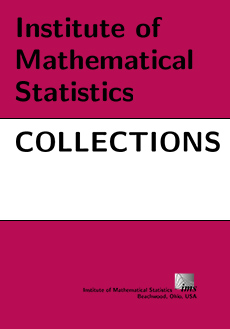Abstract
The Expectation-Maximization (EM) algorithm (Dempster, Laird and Rubin, 1977) is a popular method for computing maximum likelihood estimates (MLEs) in problems with missing data. Each iteration of the algorithm formally consists of an E-step: evaluate the expected complete-data log-likelihood given the observed data, with expectation taken at current parameter estimate; and an M-step: maximize the resulting expression to find the updated estimate. Conditions that guarantee convergence of the EM sequence to a unique MLE were found by Boyles (1983) and Wu (1983). In complicated models for high-dimensional data, it is common to encounter an intractable integral in the E-step. The Monte Carlo EM algorithm of Wei and Tanner (1990) works around this difficulty by maximizing instead a Monte Carlo approximation to the appropriate conditional expectation. Convergence properties of Monte Carlo EM have been studied, most notably, by Chan and Ledolter (1995) and Fort and Moulines (2003).
The goal of this review paper is to provide an accessible but rigorous introduction to the convergence properties of EM and Monte Carlo EM. No previous knowledge of the EM algorithm is assumed. We demonstrate the implementation of EM and Monte Carlo EM in two simple but realistic examples. We show that if the EM algorithm converges it converges to a stationary point of the likelihood, and that the rate of convergence is linear at best. For Monte Carlo EM we present a readable proof of the main result of Chan and Ledolter (1995), and state without proof the conclusions of Fort and Moulines (2003). An important practical implication of Fort and Moulines’s (2003) result relates to the determination of Monte Carlo sample sizes in MCEM; we provide a brief review of the literature (Booth and Hobert, 1999; Caffo, Jank and Jones, 2005) on that problem.
Information
Digital Object Identifier: 10.1214/12-IMSCOLL1003


